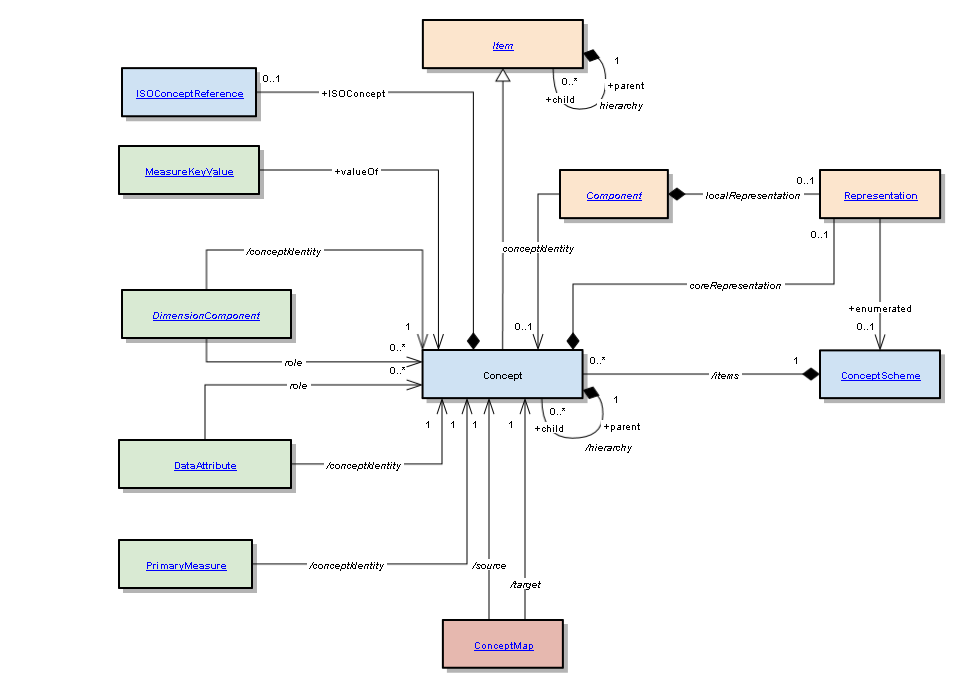Login required to access the wiki. Please register to create your login credentials We apologize for any inconvenience this may cause, but please note that this step is necessary to protect your privacy and ensure a safer browsing experience. Thank you for your cooperation. Documents available for download: GAMSO , GSBPM , GSIM |

| Object | Group | Definition | Explanatory Text | Link to GSIM |
| Concept | Specific Item Schemes | Unit of thought created by a unique combination of characteristics. | At an abstract level, a Concept is defined in the Generic Statistical Information Model (GSIM) as a “unit of thought differentiated by characteristics”. Concepts are used in different ways throughout the statistical lifecycle, and each role of a Concept is described using different information objects (which are subtypes of Concept). A Concept can be used in these situations: (a) As a characteristic. The Concept is used by a Variable to describe the particular characteristic that is to be measured about a Population. For example, to measure the Concept of gender in a population of adults in the Netherlands, the Variable combines this Concept with the Unit Type “person”. (b) As a Unit Type or a Population. To describe the set of objects that information is to be obtained about in a statistical survey. For example, the Population of adults in Netherlands based on the Unit Type of persons. (c) As a Category to further define details about a Concept. For example, Male and Female for the Concept of Gender. Codes can be linked to a Category via a Node (i.e., a Code Item or Classification Item), for use within a Code List or Statistical Classification. In SDMX the concept can be given a Core Representation such as a reference to a code list for an enumerated representation or other values such as “integer” or “string” for a non-enumerated representation. This representation can be overridden in the data structure when the concept is used as a dimension or attribute. A concept with a core representation could be regarded as a represented variable. | Concept |